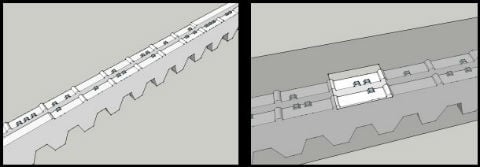By: Joshua Howgego
Send to a friend
The details you provide on this page will not be used to send unsolicited email, and will not be sold to a 3rd party. See privacy policy.
White Print, an English language Braille lifestyle magazine published in India, celebrated its first anniversary last month. News coverage by Al Jazeera claimed that the magazine is “transforming Braille publishing by providing readers with mainstream news and original features”. [1]
But, perhaps surprisingly, few blind people can read Braille. And, compared with paper, a low-cost Braille display screen like the e-readers that have become prevalent in the developed world could do more to widen its use, says David Pankhurst, a Canadian computer programming consultant and inventor who is developing one such device.
This is because such devices can be connected to computers and used to display internet content in Braille. “I see an urgent need for these devices,” says Pankhurst. “India has one of the largest populations of blind people and their opportunities for access to information are abysmal. So being able to translate online material into Braille text would open up so much for them.” This would be more convenient than shipping bulky printed Braille magazines, he says.
The figures for India are unknown, but in the United States only one in ten schoolchildren who are blind can read Braille. Pankhurst tells me that these figures betray a “chicken and egg situation”: children don’t learn to read because of a lack of Braille materials, and such materials are scarce because of low literacy levels.
Braille displays are already available, but even the cheapest 20-character displays can cost several thousand US dollars. This is because they use expensive piezoelectric crystals, which contract or expand with a change in electrical current, to control pins that form Braille characters.
Pankhurst says a simpler, mechanical design such as his own could be much cheaper. He’s aiming to produce one that costs no more than US$10 per character, with the central idea being to use sliding rails to create Braille characters (see images and video, below).

Yet Pankhurst is working on the design in his spare time and says he’s struggling to perfect the mechanism or secure funding. A crowdfunding campaign he launched on Indiegogo in November 2012 raised nearly 60 per cent of its US$1,500 target. [2]
He hopes to have a working prototype finished by September. And he’s confident that the process of developing these ideas will eventually drive down the price of Braille displays.
The price of piezoelectric crystal-based Braille displays has changed little in the nearly 30 years since they first came out, Pankhurst says. “That’s primarily, I think, because [manufacturers] can charge that much.”
Yet there are other example of low-cost Braille displays. For example, SciDev.Net has reported on a Braille smartphone, and a device called that translates computer icons and words into a tactile display.
Pankhurst says that efforts such as these and his own are beginning to force down the price of commercial Braille displays. Since he started blogging about his designs in 2011 he says the cost of these has fallen from a minimum of US$7,000 to roughly US$2,000.
Joshua Howgego is SciDev.Net’s deputy news and opinions editor. @jdhowgego
See below for a video of the sliding rail in action:
References
[1] Suhit Kelkar Braille magazine charts commercial course (Al Jazeera, 10 June 2014)
[2] Open source Braille display (Indiegogo, accessed 1 July 2014)














